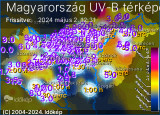MTI Sajtóadatbank, 2013. szeptember 23.
Saját magunk tesszük megfigyelhetővé saját magunkat az interneten közzétett adatainkkal - figyelmeztet a Kaspersky Lab orosz kiberbiztonsági vállalat blogja.
Nincs szükség az amerikai Nemzetbiztonsági Ügynökség (NSA) bonyolult megfigyelési technológiájára ahhoz, hogy fel lehessen állítani az egyes internet-felhasználók részletes személyiségi profilját, hiszen az ehhez szükséges adatok szabadon rendelkezésre állnak a világhálón, ráadásul azokat mi magunk tesszük elérhetővé - akár tudatosan, akár anélkül...
Ezt a veszélyt próbálja tudatosítani az University of California és az International Computer Science Institute közös "Ready or Not?" webes alkalmazása, amely a közösségi média szolgáltatásokon megjelenő bejegyzések - a közzétett és szabadon elérhető pozícióadatok alapján - térképezi fel az egyes felhasználók térbeli és időbeli mozgását.
A barátokkal és ismerősökkel előszeretettel megosztott geolokációs adatok komoly veszélynek teszik ki a felhasználókat. A lakásukat például betörők látogathatják meg a távollétük alatt. De az igazán nagy veszély a kiskorúakra leselkedik, akik a felnőtteknél jóval gondatlanabbul járnak el személyes adataikkal.
A "Ready or Not?" webes alkalmazás az internetes kommunikációban és az adatok megosztásában rejlő veszélyeket próbálja tudatosítani, elsősorban a fiatalkorú felhasználókkal.
A kockázatkezelés első és legfontosabb lépése a különböző internetes és mobil alkalmazások, mint például az Instagram vagy a Facebook geolokációs funkciójának a kikapcsolása, illetve az olyan alkalmazások, mint a Foursquare és a Twitter összekapcsolásának megszüntetése - figyelmeztet a Kaspersky Lab kiberbiztonsági cég.
A helyes személyes adatkezelés tíz alapszabálya a Kalifornia Egyetem weboldalán:
10 Principles for Privacy in Social Media and Beyond
Your information footprint is larger than you think. Your information footprint is not just what you
post online. It consists of all the information that you or others have left online, with or without knowing, and also the inferences that can be drawn from the collective information.
- There is no anonymity on the Internet. Your information footprint on the Internet is like your body in the
real world: it defines your identity. Like seeing some part of your body, seeing some part of your information footprint may make it possible for someone to uniquely identify you even when there is no name or other explicit identifier attached.
- Information about you on the Internet will be used by somebody in their interest — including against you. Every piece of information, public or not, has value to somebody: to other people, to companies and organizations, or to governments. They will use your information however benefits them, which may
be contrary to your interests—and possibly even embarrassing or dangerous to you.
- Communication over a network, unless strongly encrypted, is never just between two parties. Unencrypted communication over the Internet works a lot like sending a postcard: it can be read by anybody along the delivery route. Communication is routed through intermediary computers and systems, which are
connected to many more computers and systems. Encryption is a way to wrap a postcard in an envelope. - While it can never be 100% secure, stronger encryption makes it harder for people to get to the contents.
- Sharing information over a network means you give up control over that information. Any time you interact online (emailing, texting, posting to websites, tagging, uploading pictures), that information is recorded in the network. And, as with in-person communication, once you’ve shared something, you can’t control what happens to it. Other people may repost private information without your permission, websites may sell information to other businesses, and data can be legally subpoenaed.
- Anything shared over the network is open to misinterpretation. People’s viewpoints are influenced by a variety of factors. It is very unlikely that the author and the audience will have the same viewpoint. On the
network, audiences are diverse and large, and information is often missing many of the cues that convey the original intent, which often leads to misunderstanding.
- The Internet not only duplicates, it never forgets! It is easy to share and store information, but it is almost impossible to tell the Internet to forget and “unshare” information, because you no longer control it. People repost and forward content they like; websites and search engines automatically and continuously pick up and duplicate content from the web—but deletion is almost never automatic.
- Just because something can’t be found today, doesn’t mean it can’t be found tomorrow. Every day, more data is being put online. Search engines are getting better, allowing “deeper” searching of more types of data. Techniques for extracting and connecting information from different sources are getting more powerful.
- Furthermore, information that is not retrievable today may be retrievable tomorrow due to changes in terms of service, public policy, law, and technical privacy settings.
- Identity is not guaranteed on the Internet. Creating an identity on the Internet or impersonating somebody else is often just a matter of a few clicks. Currently, there is no foolproof way to match a real person with their tonline identity. This means that you can never be sure with whom you are communicating, and that someone could steal your online identity and impersonate you!
- You can’t avoid having an information footprint by not going online. Even if you’re not active online, someone else may be sharing information about you. So, avoiding the Internet does not guarantee privacy.






